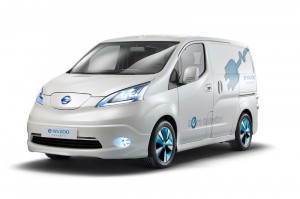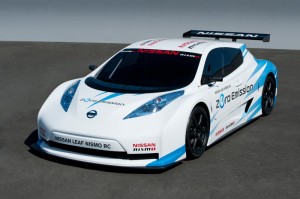
Nissan’s LEAF is just the start of Nissan’s EV programme and there’s plenty more to come
- New LEAF to be followed by more EVs, including:
- e-NV200, battery-powered LCV and people mover
- e-NV200 taxi
- Compact luxury EV from Infiniti
- Fuel cell vehicles by 2017
The Nissan LEAF, the best-selling electric vehicle in the world, has secured Nissan’s place as global leader in zero-emission mobility. But it’s just the start of Nissan’s wide-reaching electric vehicle programme.
A 100 per cent electric version of Nissan’s award-winning NV200 light commercial van is nearing the end of its development programme. Prototype models have driven hundreds of thousands of miles in the hands of commercial partners such as Coca-Cola, the Japan Post Office and FedEx to provide real-world feedback while Europe’s fleet industry has given the vehicle the thumbs up after an early preview.
Five leasing companies, six major fleet operators and three used value guides visited Nissan’s Barcelona plant – where e-NV200 is to be built – to drive the van and hear about Nissan’s future plans.
The response to the vehicle was so enthusiastic that many of the delegates demanded that it be put into immediate production: sales will begin in 2014.
e-NV200 uses the same proven powertrain as New LEAF and will also be available in Combi and Evalia people mover forms.
The versatile NV200 is also being turned into a London taxi in line with the capital’s strict Hackney Cab regulations and while the first examples to appear will be diesel-powered, an electric NV200 Black Cab is also being developed.
Another new EV, also using the LEAF powertrain and due by the end of 2014, is an all-new luxury compact from Infiniti.
A technology which Nissan is also developing for the future is the hydrogen fuel cell. Nissan’s TeRRA concept, shown at the 2012 Paris Motor Show, combined two outstanding company strengths: SUVs and EVs.
Envisaged as an urban SUV 4×4, TeRRA has its front wheels driven by the ubiquitous LEAF powertrain, while at the rear two in-hub electric motors drive the rear wheels. The batteries, mounted under the cabin floor, are fuelled by the latest development of Nissan’s hydrogen fuel cell stack, a compact yet powerful unit that fits easily under the bonnet.
The TeRRA concept demonstrated how components like motors, batteries and inverters can be shared between battery and fuel cell electric vehicles, which Nissan sees as complimentary rather than competing technologies.
Although purely a concept at the moment, it won’t be long before Nissan fuel cell vehicles will be on sale.
A far reaching strategic cooperation signed earlier this year between the Renault-Nissan Alliance, Ford and Daimler expects to lead to the launch of the world’s first affordable, mass-market fuel cell electric vehicles as early as 2017.
The goal of the collaboration is to jointly develop a common fuel cell vehicle system while reducing the investment costs associated with the engineering of the technology. Each company will invest equally in the project.
“Fuel cell electric vehicles are the obvious next step to complement today’s battery electric vehicles as our industry embraces more sustainable transportation,” said Mitsuhiko Yamashita, Member of the Board of Directors and Executive Vice President of Nissan Motor Co., Ltd., supervising Research and Development.
“We look forward to a future where we can answer many customer needs by adding FCEVs on top of battery EVs within our zero-emission lineup.”

